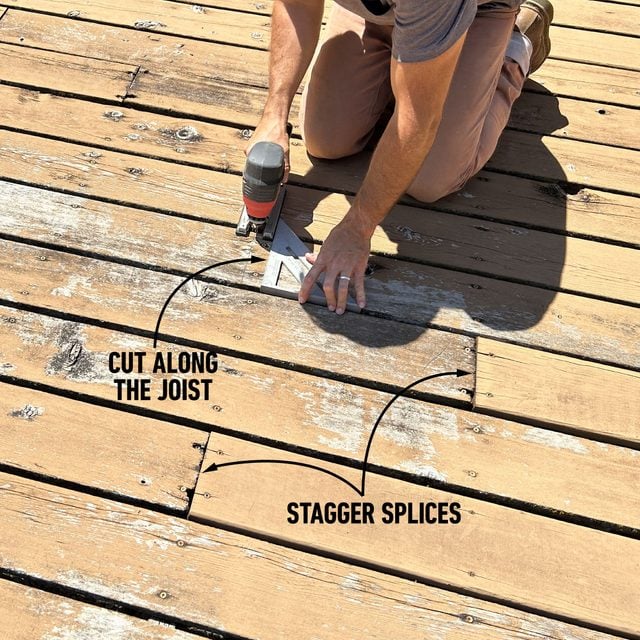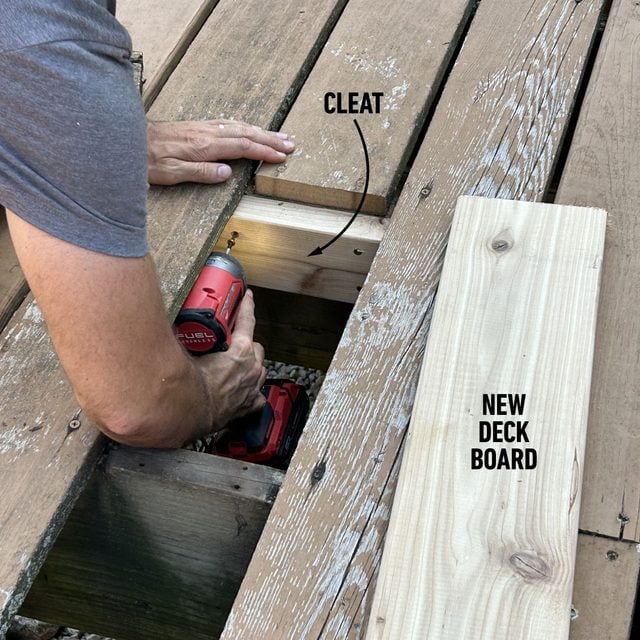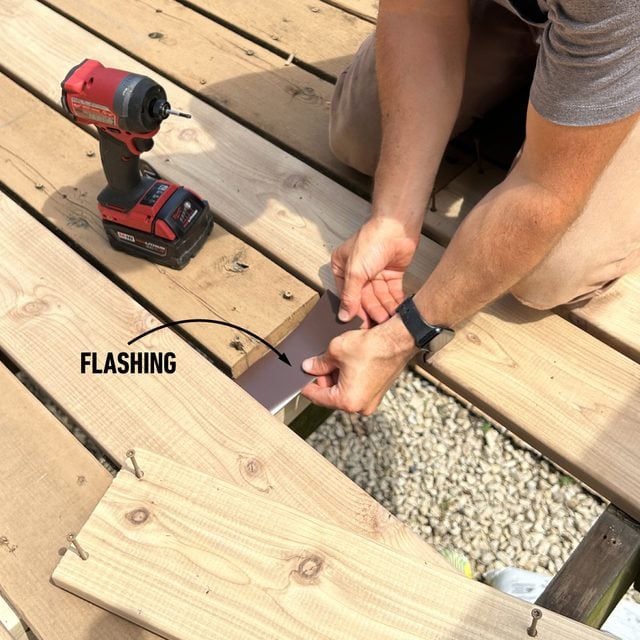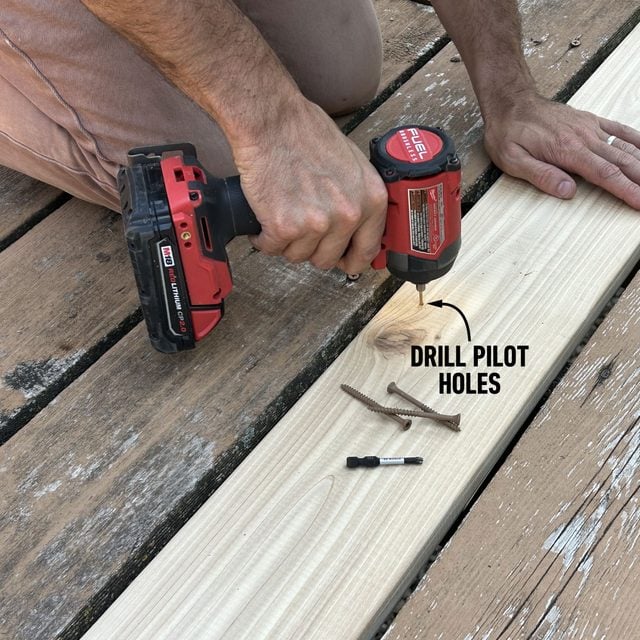Don't build a new deck if all you have to do is replace a few boards.
1 - 2 hours
Beginner
Varies
Introduction
Replacing deck boards isn't that hard, and it's a whole lot faster and cheaper than building a new deck. We'll walk you through the steps.
Tools Required
- Cat's paw
- Circular saw
- Drill/driver - cordless
- Extension cord
- Hammer
- Hearing protection
- Jigsaw
- Locking pliers
- Miter saw
- Nail set
- Pry bar
- Safety glasses
- Sawhorses
- Speed square
- Tape measure
Materials Required
- Deck boards
- Galvanized nails and screws
Project step-by-step (6)
Cut out the bad part of the board
Take a jigsaw and cut the section of the bad board free from the joists at both ends. Mark and cut alongside the joist using a Speed square as a guide.
When determining where to cut out deck lumber, keep these guidelines in mind:
- Splices should be offset by at least one joist space
- New boards should be supported by three joists or cleats.
- Staggering splices over four or more rows of deck boards looks best
- Mark the replacement boards before cutting any of them out. Weaving the new splices to look new can be a puzzle.

Pull the nails and remove the board
Pull the nails that hold the board in the middle. Drive a cat’s paw into the wood under the nail head. Pull back on the handle to remove the nail. If the nailhead pulls off, use locking pliers to grab the nail shank.
Fasten cleats
Remove the bad board as well as any deck fasteners stuck in the joists. Then install cleats to support the ends of the new board. Fasten the 12-inch long cleats to the joists after pulling them up against the bottom of the adjacent deck boards.

Install flashing
Before installing the new board, place a piece of flashing tin on top of the cleat. If possible, lift the abutting board slightly and slide the flashing underneath it as well. The flashing will prevent water from standing on the seam between the cleat and the joist, preventing future joist rot.

Install the new board
Using the same decking material to match the rest of the deck, cut a length to fit where you removed the old board. I like to leave a small 1/16-in. gap between the boards to allow the ends to dry when they get wet. Position the board, drill pilot holes and fasten the boards to the joists. Use the same spacing and type of screw as the rest of the deck.

FAQs
Should deck boards be screwed into every joist?
Yes. Deck boards should be screwed into every joist or cleat they span (minimum of three) with at least two decking screws in each joist.
Should you nail or screw deck boards?
You can use either. Screws are recommended because of their superior holding power, especially in soft woods such as pine.
Should deck boards be spaced or tight?
Spaced. When building a deck, there should be a gap between deck boards — no more than 3/8-inch — to allow water and small debris to shed off.





















